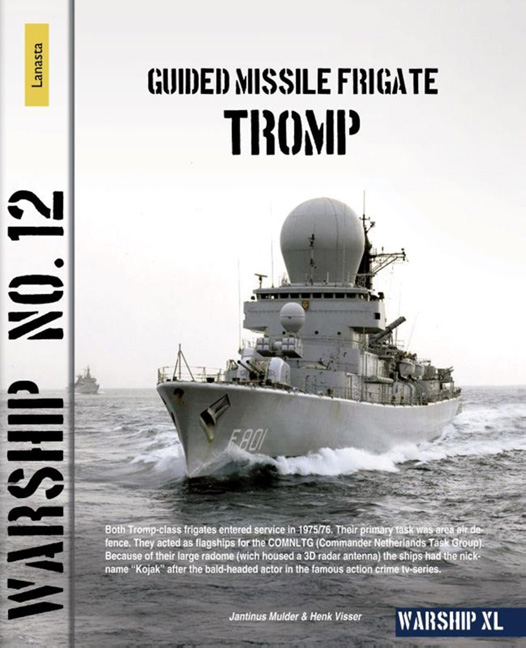Introduction
Published online by Cambridge University Press: 27 March 2024
Summary
In 1964 new plans were developed concerning the structure of the fleet within the first six years of the seventies. The intention was to decommission the carrier and replace the cruisers by two or four guided missile frigates. They would be equipped with an automated force AAW weapon-system TARTAR. Their coordination system consisting of the 3D radar and an automatic Combat Information Processing and Distribution System (DAISY) with automated inter-ship data-links. In October 1970 an order was placed with KM De Schelde in Vlissingen (Flushing) for the delivery of two GM-frigates.
Guns or missiles?
A fundamental change was the rise of self-propelled missiles, which alter the relationship between the power of the weapon and the demands it placed on the launching ship. Self-propulsion eliminates the need for elaborate launching equipment (i.e. heavy guns) and recoil effects. It is fair to put that the balance of costs shifted from a relatively inexpensive round fired by an expensive weapon equipped with an elaborate fire control system, to the opposite: an expensive single round requiring, often, rather inexpensive investment in acquiring launcher and fire control (upon the extent to which the missile is self-guiding).
Missiles provide small warships with the firepower of the capital ship of the past.
Short response time became necessary. The new threat required changes in the build up of the fleet and its armaments. A decision had to be taken to modernize or replace the large ships of the fleet, the latter being chosen for cost reasons. Technological developments also played a role. In the new design automation was saving space. The development of gas turbines for propulsion was one of these. It resulted in a personnel reduction. Gas turbines were immediately operational and increased readiness (not raising steam). The machinery was remote controlled. The development of a 3D radar in combination with an automatic combat information system (DAISY) was another innovation that appealed to the Royal Netherlands Navy. With the 3D radar, it became possible to establish, besides bearing and distance, also the altitude of incoming objects in the air and report these contacts to fire control (WM-25).
To answer the threat, Cold War in the sixties
By mid-sixties the Soviet threat was twofold. Soviet ballistic missiles and cruise missiles could be launched by submarines. While the first were targeting on land, the second could be used against ships.
- Type
- Chapter
- Information
- Guided Missile Frigate Tromp , pp. 3 - 72Publisher: Amsterdam University PressPrint publication year: 2021



